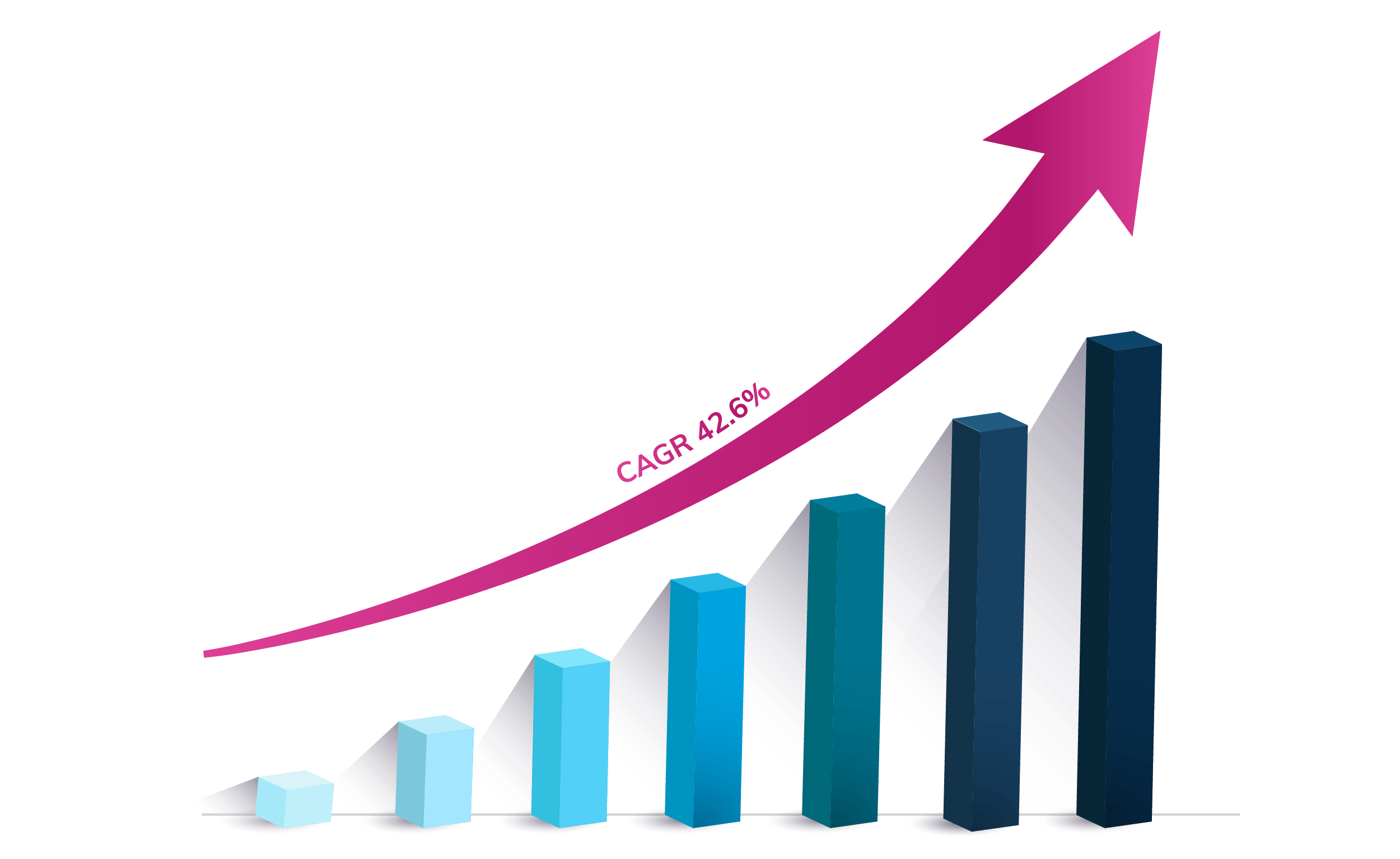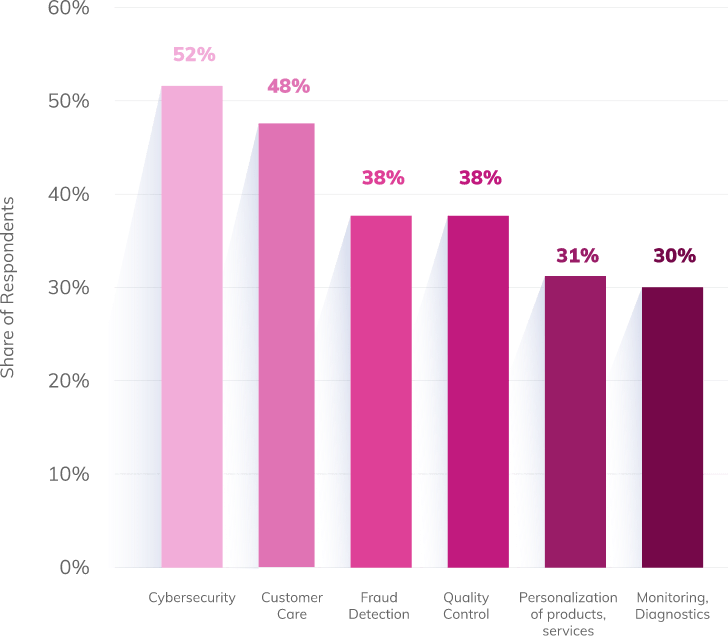The telecom industry has evolved from a simple provider of phone and internet services to a key driver of innovation and progress in the digital age. With the advent of mobile and 5G broadband technologies, the telecom industry is enabling new possibilities for the Internet of Things (IoT), where billions of devices are connected and communicate with each other. To harness the full potential of this connectivity, the industry is increasingly adopting artificial intelligence (AI) solutions that can optimise network performance, enhance customer experience, and create new revenue streams.
AI applications in telecommunications are transforming the industry by reducing costs, optimising networks, and improving customer experience. According to a report by Valuates, the global AI in telecommunication market size is projected to reach $19.17 billion by 2028, from $1.72 billion in 2021, at a CAGR of 40.6% during 2022-2028. This indicates that AI is not only a trend, but a necessity for telcos to stay competitive and innovative in the rapidly changing market.

AI is transforming the telecommunications industry in various ways, from enhancing customer experience to optimising network operations. The key statistics below illustrate the impact and potential of AI in this sector:
In 2021, the global AI in the telecommunications industry produced $1.2 billion in revenue, according to a report by Allied Research Group*. This indicates a growing demand for AI solutions and services among telecom operators and vendors.
The same report projects that the value of the AI in telecommunications will reach $38.8 billion by 2031, implying a compound annual growth rate (CAGR) of 41.4% spanning the years from 2022 to 2031. This reflects the increasing adoption of AI technologies such as natural language processing, machine learning, computer vision, and deep learning in various telecom applications.
Global AI in telecommunications market size 2021-2027
Source: Valuate

Another relevant segment of the AI market for the telecommunications industry is robotic process automation (RPA), which automates repetitive and rule-based tasks using software robots. Statista estimates that the global RPA market will increase from $1.4 billion in 2019 to $13 billion in 2030**.
A survey conducted by NVIDIA in 2023 revealed that 73% of telecommunications companies see AI as a tool to grow revenue, improve operations and sustainability, or boost customer retention***.
The same survey showed that 80% of telecommunications companies that adopted AI saw a reduced annual cost in the past year, with an average savings of 15%.
These statistics demonstrate that AI is not only a disruptive force but also a strategic opportunity for the telecommunications industry. By leveraging AI capabilities, telecom companies can enhance their performance, efficiency, and competitiveness in the fast-changing digital landscape.
* https://www.uctoday.com/unified-communications/ai-in-telecommunications-market-just-under-40-billion-by-2031-global-research/
** https://www.statista.com/statistics/1259903/robotic-process-automation-market-size-worldwid/
*** https://blogs.nvidia.com/blog/2023/02/21/telco-survey-ai/

The telecommunications market is characterised by its dynamic and fiercely competitive nature, presenting numerous challenges for companies operating in this sector, some of which are:
Maintaining and upgrading network infrastructure is essential for providing reliable and fast services to customers. However, the complexity and diversity of network technologies, devices, and applications pose significant challenges. Network outages, cyberattacks, and regulatory compliance further impact service quality and customer satisfaction.
Despite access to vast amounts of customer, device, and network data, telcos struggle to extract valuable insights due to the lack of appropriate tools and analytical skills. Insufficient data analysis hinders optimising network performance, enhancing customer experience, and identifying new opportunities.
Telcos face substantial expenses in maintaining and upgrading network infrastructure, acquiring spectrum licenses, and complying with regulations. These costs can significantly reduce profit margins and limit investments in innovation and growth.
Operating in a highly competitive and saturated market, telcos face fierce competition from other industry players, including over-the-top (OTT) service providers. These OTT providers offer voice, video, and messaging services over the internet, often with competitive pricing, superior quality, and advanced features. Such competition poses challenges in retaining customers and market share for traditional telcos
AI in the telecom industry uses advanced algorithms to look for patterns within the data, enabling telecoms to both detect and predict network anomalies. This technology has found various applications in the telecom sector:
By analysing network traffic, user behaviours, and environmental factors, AI can optimise network performance, capacity, and coverage.
AI can prevent network failures and downtime by detecting anomalies and faults in advance and recommending corrective actions.
AI can provide 24/7 customer service by using natural language processing and speech recognition to respond to customer queries and requests through conversational interfaces such as chatbots or voice assistants.
RPA can help automate different tasks across various systems, which are mostly repetitive, high-frequency, labour-intensive and time-consuming.
By using machine learning and anomaly detection techniques, fraudulent activities such as identity theft, SIM swapping, and subscription fraud can be detected and prevented.
Historical data, market trends, and customer behaviour patterns can be used to predict future demand for telecom products and services.
AI can identify and retain customers who are likely to switch to another provider by using predictive analytics and personalised offers.
Segmentation, recommendation, and sentiment analysis techniques can be used by AI to help deliver targeted and relevant marketing campaigns to customers.
AI has emerged as a valuable tool for the telecoms industry, finding numerous applications across various domains. Some notable use cases include cybersecurity, customer care, fraud detection, quality control, personalisation of products and services, and monitoring/diagnostics.
In cybersecurity, AI assumes a critical role in ensuring the protection of telecom networks. Through continuous monitoring of network traffic and the identification of anomalies, AI can swiftly detect potential cyber threats and respond effectively to mitigate risks.
AI-powered solutions improve customer care by offering automated and personalised responses to common queries and requests. This not only reduces waiting times for customers but also lowers costs for telecom companies.
Fraud detection is another area where AI shines. By analysing customer behaviour and identifying suspicious patterns, AI algorithms can flag fraudulent activities such as identity theft, subscription fraud, SIM swapping, and revenue leakage. Cutting-edge technologies like anomaly detection, biometric authentication, and blockchain can further enhance fraud prevention measures.
Quality control is also improved by AI in telecom networks. By monitoring network parameters such as bandwidth, latency, jitter, and packet loss, AI algorithms can optimise these parameters through predictive analytics, self-healing algorithms, and automated testing.
AI enables personalised experiences by analysing customer data, needs, preferences, and behaviours. Through data mining, natural language processing, and machine learning techniques, telecom companies can deliver more engaging and relevant products and services tailored to individual customers.
Lastly, AI plays a crucial role in monitoring and diagnostics. Telecoms utilise AI-powered analytics and machine learning to track network issues, customer complaints, and service quality, facilitating proactive management and swift problem resolution.
These diverse AI use cases underscore its transformative potential within the telecoms industry, enabling enhanced security, improved customer experiences, efficient operations, and better overall performance.

AI plays a pivotal role in the development and optimisation of 5G networks. With the unprecedented speed, capacity, and connectivity that 5G offers, AI technologies become even more critical in managing the complexity and scale of these networks. AI algorithms and machine learning models are utilised to enhance network performance, automate network management tasks, and enable intelligent decision-making. AI-driven approaches enable dynamic resource allocation, predictive maintenance, and efficient network planning to ensure optimal network performance and user experience. It also empowers 5G networks with the ability to adapt to changing conditions, optimise energy efficiency, and proactively detect and mitigate network anomalies or security threats. As 5G networks continue to evolve, AI will play an increasingly vital role in unlocking their full potential and enabling a new era of connectivity and innovation.

Together, 5G and AI can enhance each other's capabilities and create new opportunities for telcos. The ultra-low latency and high-speed connectivity offered by 5G networks enable AI systems to operate in real-time and process data faster than ever before. This empowers AI applications to leverage the vast amount of data generated by 5G-connected devices and networks. The increased bandwidth and network capacity of 5G allow for seamless transmission of data, enabling AI algorithms to train and learn from larger datasets. The widespread deployment of 5G networks facilitates the efficient deployment and scaling of AI-powered applications, particularly in areas such as autonomous vehicles, smart cities, healthcare, and industrial automation. The combination of 5G and AI opens up new possibilities for advanced technologies and innovations, driving the development of intelligent systems that can revolutionise industries and enhance our daily lives.
